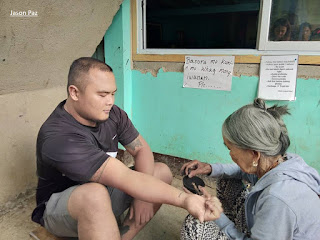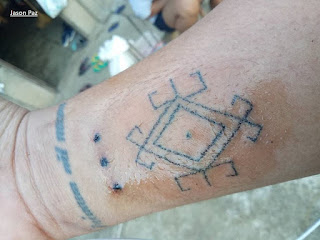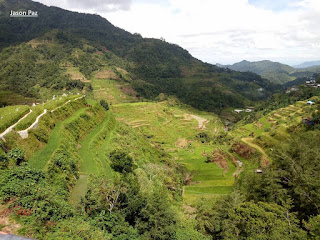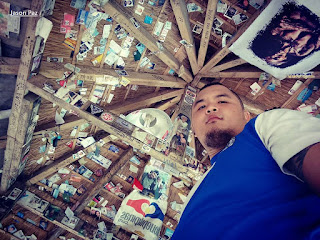Throughout history, tattoos have always had an important role in ritual, society, and tradition which have symbolized something deeper from what it represents. That tradition holds true today, and is still practiced in Buscalan, Kalinga which is located 470 km North of Manila that passes zigzagging roads and torturous highways with no guard rails from the deep canyons but nonetheless the view is simply awesome. After several hours of long drive, one still has to trek for 45 minutes in order to reach Buscalan village. It starts with an ascent to a hill that passes through cliffs with ravines on one side. Then upon reaching the village, one will be rewarded with the scenic views of the surrounding Rice Terraces and nearby mountain ranges.
Born on 17th of February 1917, Whang-Od also known as Maria Oggay is often described as the "last" and oldest "Mambabatok". She started tattooing headhunters and women of the indigenous people of Butbut in Buscalan, Kalinga at the age of 15. While the Kalinga tattoos have lost some of its ancient meaning over the years, yet the process and materials used by the legendary Apo Whang-Od of Tinglayan, Buscalan have remained the same. The only difference for tourists who wishes to have a tattoo is that she no longer do chants, as the chants are only for the beautification of Kalinga women and for the celebration of Kalinga men's victory in battle.
Traditionally, Butbut warriors earn their tattoos by protecting villages or killing enemies and tattoos serves as their merit for the heroic acts that they did. Each tattoo represents every person they have killed in a tribal war. It was then a symbol of bravery that separates the weak from the more courageous and experienced warriors. Eventhough, headhunters no longer exist today, Whang-od continues to apply her traditional art form to tourists who visit Buscalan.
She uses the traditional materials and tools that includes: a coconut bowl where water, charcoal and sweet potato which are mixed and serves as the ink. She then uses a lemon or calamansi thorn attached to a bamboo stick where it is dipped to the ink mixture in the coconut bowl. Then the bamboo stick with thorn is hammered unto the skin done in the centuries-old tradition which is permanently inked to the person’s skin. There are several designs which vary from the centipede, snake for protection to the more complex design all of which uses geometric pattern. My friend and fellow Team Una member Jason Paz had his "Traveler's Protection" tattoo who shared the pictures featured in this blog. We were originally planning for a Mt Namadiraan hike but due to last minute cancellation, he opted to join a seat-sale Buscalan tour. Thus, it was based on his narration and pictures that this article was written.
Apo Whang Od is definitely one of Philippines’ last living cultural treasures and has been featured on National Geographic, CNN and in several local and international magazines, it was a good thing that she has trained the next generation "mambabatok" in their tribe to ensure that the legacy of their culture will be preserved.
 |
| Jason having a tattoo from Whang-Od |
 |
| Traveler Protection |
 |
| Rice Terraces in Buscalan |
How to Get There:
1.) Take a bus ride from Coda Bus Line in Quezon City going to Bontoc, Mountain Province (only one trip and bus leaves at 10pm).
2.) Once you are in Bontoc, Mountain Province you can take a van, jeep or minibus bound for Tinglayan, Kalinga.
The total hike time from the turning point to Buscalan Village is between 45m to 1h depending on one's pacing.
**Photo credits to Jason Paz who owns all the pictures in this blog.
**Team Una Outdoors also has an event tour to APO Whang-Od just Click Here to Join.



Very descriptive and nice article. I always check your blog for new blog entries.
ReplyDeleteThank you.
Delete